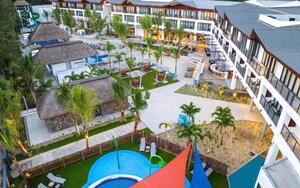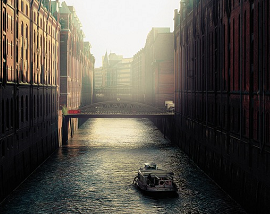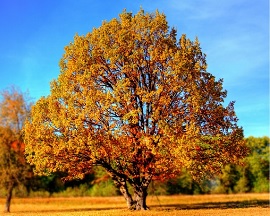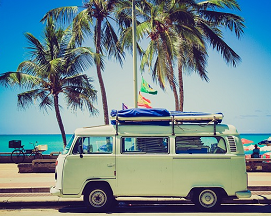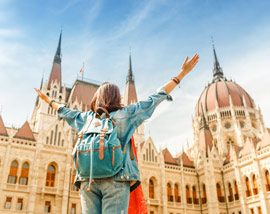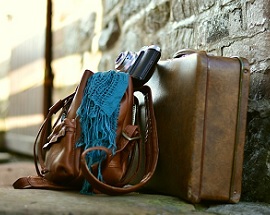Mauritius, known for luxury beach vacations, dazzles even the most discerning traveller with its natural beauty and cultural heritage. The stunning beaches of Mauritius are picture-perfect, encircling the island exactly how the vacation brochures promise. They are also great places to explore the watersports lover in you. But that’s not all.
Apart from its famed sands, there are terrific hiking trails and opportunities to explore mountain climbing. The main island has a central plateau with thick forest cover, which provides habitat to exotic and endemic plants and animals such as the Mauritius flying fox, which is unique to the island nation.
Mauritius is also culturally intriguing, with a hypnotic blend of Indian, African, and European influences
A proud Mauritian islander is said to have told Mark Twain, ‘Mauritius was made first and then heaven…’
Sunny, multi-cultural Mauritius certainly seems close to heaven, if your idea of heaven is miles of white beaches, warm turquoise seas, colourful street markets, diverse culinary traditions and excellent accommodation and activities for all budgets. While you savour your own particular experience of Mauritius tourism, you’ll notice that even the air seems purer and fresher than anywhere else. The World Health Organisation has declared that Mauritius has the second cleanest air on earth!
Quick Overview
| Mauritius Tourism |
Information |
| Official Language |
English |
| Also Known as |
Republic of Mauritius |
| Currency |
Mauritian rupee (MUR) |
| Time Zone |
UTC+4 (MUT) |
| Area |
2,040 Square Kilometer |
| Best known for |
Sweets, Bottle Art and Seven-Coloured Earth |
| Things To Do |
Deep Sea Fishing, Trekking And Blue Bay Marine Park |
| Places To Visit |
Port Louis Theatre And Fort Adelaide, Caudan Waterfront, Champ De Mars And Trou Aux Cerfs |
Mauritius Geography
The country’s land area measures up to 2040 square kilometres, making it one of the smallest in the world. The Republic of Mauritius is made up of the main island of Mauritius and several smaller surrounding islands like Rodrigues, St. Brandon, and Agalega.
The islands were created as a result of underwater volcanic eruptions around 8 million years ago.
The main island of Mauritius measures 61 kilometres long and 46 kilometres wide at its widest point, with a land area of 1,865 square kilometres. It is surrounded by a coral reef, the world’s third-largest, which creates many shallow lagoons and protects its beaches from the open sea.
Several rivers and streams flow through the main island, formed in the cracks formed during the volcanic eruptions millions of years ago. The island has four natural lakes, two of which are crater lakes and one a reservoir.
Mauritius is a largely mountainous island, but the peaks are not too high. Mauritius is composed of a broken ring of mountains rising to 600 to 800 metres above sea level, surrounding a central plateau.
At 828 metres, the highest mountain on the island is Piton de la Petite Rivière Noire in the southwest, followed by Pieter Both and Le Pouce.
Port Louis and Mahebourg have the two biggest harbours on the main island.
Rodrigues island is the next biggest island, with an area of 108 square kilometres. It’s a volcanic island and has a coral reef and significant deposits of limestone. Meanwhile, St. Brandon and Chagos consist of numerous small islands and atolls.
Located in the African continent, the country is made up of the main island of Mauritius, the island of Rodrigues, the small Agalega islands and some smaller shoals. Most of the population lives on the island of Mauritius, which lies 800km east of Madagascar and approximately 4000 km southwest of India. Its capital is Port Louis. Mauritius is ringed by three mountain ranges, the Moka, the Black River Chain and the Grand Port. 160 km of silky white beaches fringe its coastline and it is almost completely surrounded by coral reefs. No spot on the island of Mauritius is more than 45 minutes’ drive from the sea.
Being isolated for thousands of years, Mauritius has developed a unique flora and fauna. The famous flightless bird, the extinct dodo, was found only on Mauritius. The country’s national flower, the Boucle d’Oreille, grows only on the top of one mountain, Le Morne Brabant. Mauritius also has the world’s third-largest coral reef.
With mountains, forests and seas to explore, eco-treks, hiking, birding, diving and snorkelling are some of the major attractions of Mauritius tourism.
Mauritius Climate
Mauritius has a tropical maritime climate with few seasonal variations in temperature throughout the year.
Mauritius has mainly two seasons:
- A humid summer season that falls between November and April
- A dry winter from June to September
The warmest months in Mauritius are January and February, while the coolest are July and August. Interestingly, the island experiences the most rainfall during the summer months, with the annual rainfall amounting to almost 900 mm. Thanks to prevalent trade winds coming in from the ocean, the central plateau is generally cooler and experiences more rainfall.
There is a high likelihood of cyclones between January and March
Mauritius enjoys warm weather round the year, with the average temperature ranging between 17 deg. C and 30 deg. C. The best time to visit Mauritius is between May to December, when the weather is cool, dry and sunny. Try not to plan your trip during the wet cyclone season, from January to March.
As you’ll spend a fair amount of time on the beach, you’ll be most comfortable in light cottons, shorts and t-shirts. Swimming costumes, sun hats, sunglasses, sunscreen and sandals are essential. We suggest you also wear protective shoes while swimming, as you might encounter sea urchins, lionfish and stone fish.
Mauritius Culture
Any vacation is incomplete without gaining insight into how the locals live and what their culture is all about. Every destination is unique, and its culture adds to the flavour and charm of the place.
Experiencing the culture and understanding the heritage can be a great experience, be it the local language, art, religion and celebrations. It is, indeed, a different dimension of tourism.
Mauritius is an island with one of the most culturally diverse populations in the world. A rich culture with a diverse and harmonious population in a unique geographical location—the cultural blend in Mauritius is almost mystic.
Mauritius does not have an official or national language. French and English are the most widely spoken languages in Mauritius. The country is a member of both the La Francophonie and the Commonwealth of Nations.
Expectedly, the population is mainly multilingual. But the Mauritian Creole, a blend of African and European languages, is the mother tongue of most Mauritians.
When it comes to music, Sega and Bhojpuri folk songs are very popular in the islands. The influence of Bollywood music can also be felt, an indication of the presence of people with Indian roots in Mauritius.
Not surprisingly, Hinduism is the most practised religion in Mauritius, followed by Christianity and Islam.
Much of the art, architecture, and culture shows colonialist influences because the Dutch, British, and French settlers had previously occupied the islands.
Take your time exploring the culture and traditions of this tropical island nation, and you won’t be disappointed.
Mauritius unfolds before you like an exciting, multi-cultural tapestry. With the mingling of the island’s Indian, African, Chinese and French heritage, you’ll find that there is true inter-racial harmony among people. They take pride in being Mauritian, despite not having a shared language or shared customs.
With its rich diversity in cuisine, architecture and social customs, Mauritius is considered a true melting pot of cultures.
Most of Mauritius is quite conservative. Removing your leather shoes and belts, and being modestly dressed when visiting places of worship, is recommended.
Children and family occupy centre stage in Mauritian culture. Kids are welcomed everywhere. Most places offer child and family-friendly facilities, another factor that makes for the perfect family holiday.
As a further testament to its peaceful, welcoming and tolerant culture, Mauritius has been declared to be one of only four countries in the world which was not involved in any international or domestic conflict. It has friendly and cordial relations with all its neighbouring countries.
Reasons to Visit Mauritius
There are so many things to do in Mauritius for every family member. From heritage structures to adventure sports to fun-filled shopping to luxury experiences, Mauritius tourism opens up a world of possibilities.
Driving along lovely coastal roads, you can go north to Grand Baie, a lively resort town that offers shopping, fine cuisine options and nightlife. On the west coast stretch the stunning beaches of Mauritius. With its safe, clear waters and pristine sands, Trou aux Biches has often been called the world’s best beach destination and is very popular with families. At the other end is Le Morne, with its long beach, lagoon bordered by a reef and a magnificent golf course, all designed around the foot of an imposing mountain.
Get picture-perfect selfies at the Seven Coloured Earths - these are stunning sand dunes in the south-west Chamarel region of Mauritius, dating back approximately seven million years. The dunes are a geological formation composed of seven colours of sand, ranging from yellow and brown to dramatic black, red and purple. The different layers form and settle spontaneously, giving the dunes their unique, striped appearance. Besides, it is said that the dunes never erode, despite the torrential rains that lash Mauritius.
The intriguing history of the island is on display at Eureka House, the largest house in Mauritius, with 109 doors and windows. It is a beautiful museum dedicated to the island’s colonial history, with lush gardens and waterfalls surrounding it.
Of course, Mauritius tourism has many other places of interest and there are multiple places to visit in Mauritius including pretty towns, nature reserves, museums and luxury malls.
Whether you want an action-packed holiday or a relaxed beach vacation, with nothing more to do than explore the street food and vibrant flea markets, you’ll find it in Mauritius.
Mauritius tourist visa is not required for citizens of India for a stay up to 60 days. Also, the official Mauritius currency is Mauritian Rupee (MUR).
Mauritius FAQ
Which language is spoken in Mauritius?
Several languages are spoken throughout Mauritius, mainly English, Creole, and French.
When is the best time to travel to Mauritius?
The best time to travel to Mauritius is between May and December, when the climate is dry, moderate and sunny. Like many Indian Ocean destinations, there is never a bad time to visit, but one should be aware of the cyclone season, from January to March.
What currency is used throughout Mauritius?
The currency used throughout the country is the Mauritian rupee. Credit cards are accepted at most hotels, restaurants and tourist shops. ATMs are common throughout the country. Like most destinations, it is advisable to have local currency for incidental purchases and gratuities.
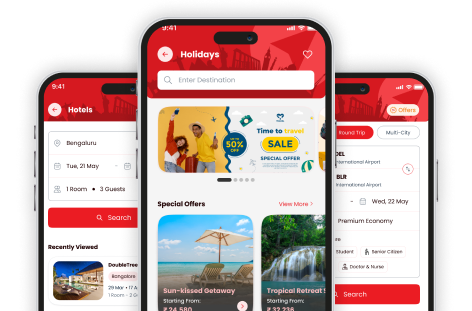




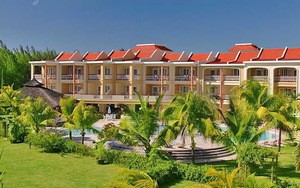
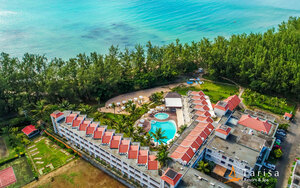
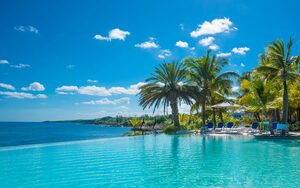
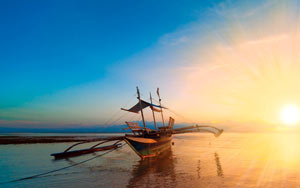

.jpg)
.jpg)
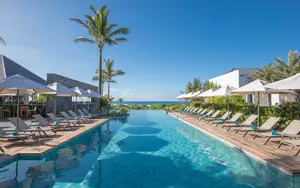
SRP8.avif)
